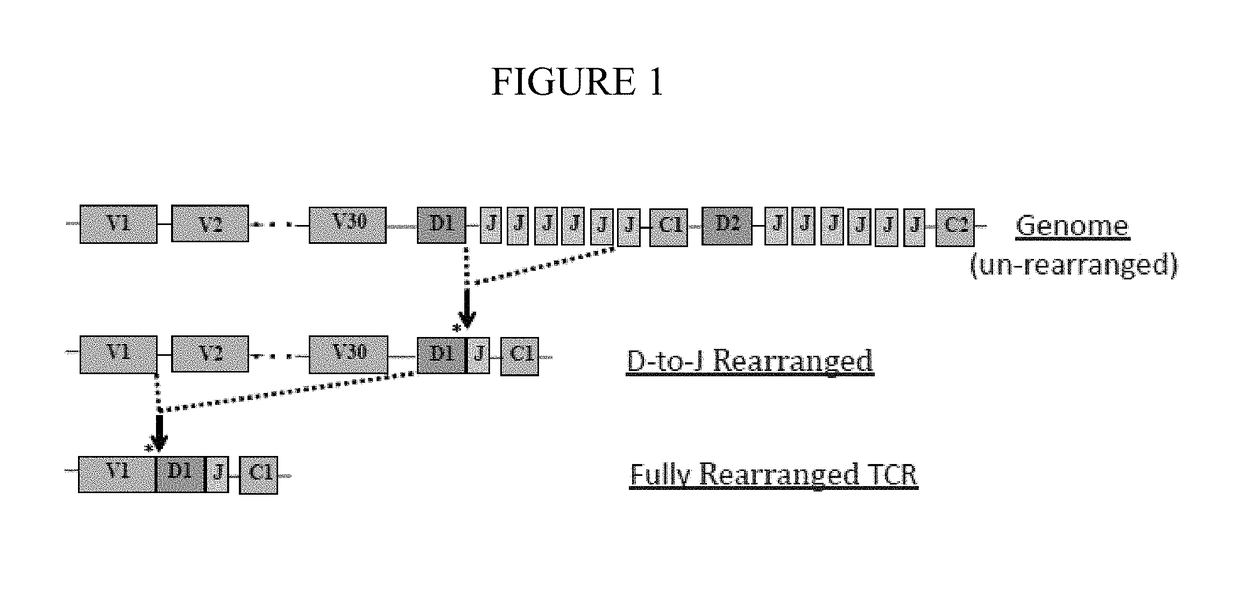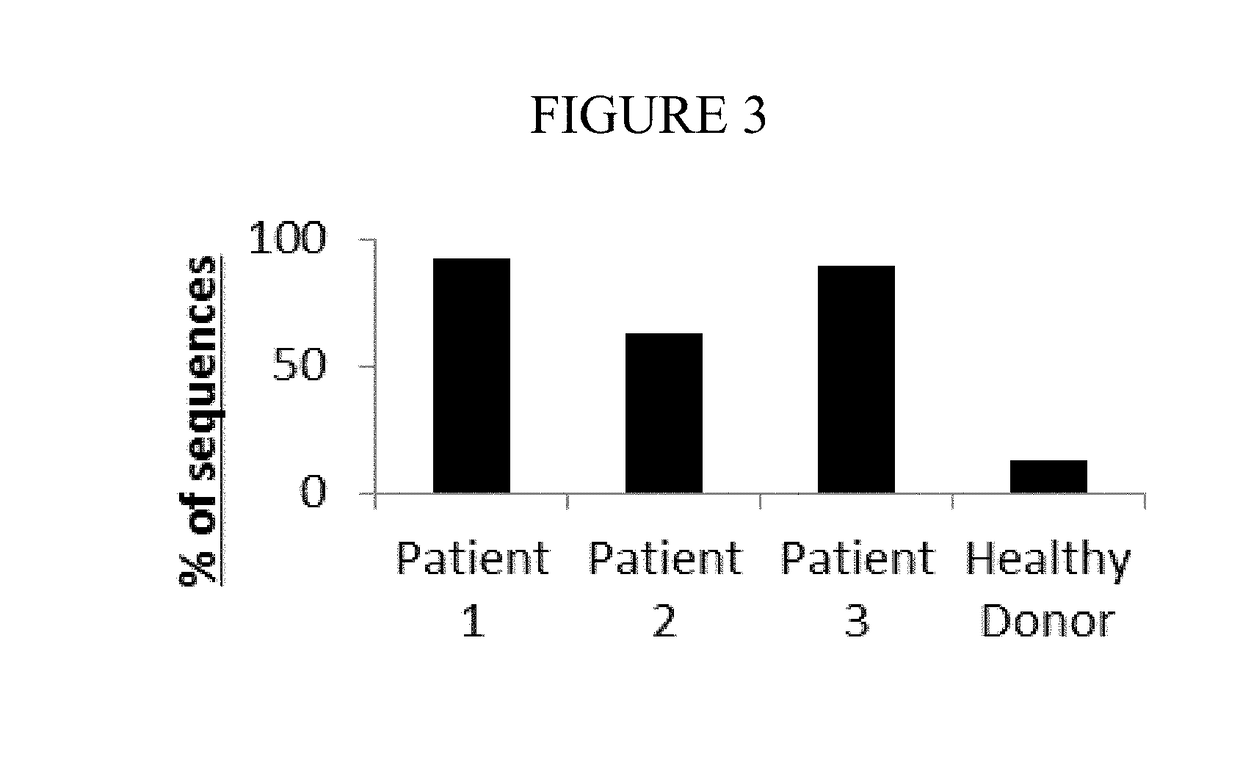Diagnostic methods for identifying t-cell lymphoma and leukemia by high-throughput tcr-beta sequencing
a high-throughput, sequencing technology, applied in the direction of microorganism testing/measurement, biochemistry apparatus and processes, etc., can solve the problems of short remission time, grim mortality statistics, and high incidence of pets
- Summary
- Abstract
- Description
- Claims
- Application Information
AI Technical Summary
Benefits of technology
Problems solved by technology
Method used
Image
Examples
example 1
of TCRβ Library
[0053]Method A:
[0054]Lymph node samples were obtained from 4 dogs (3 canine T-cell lymphoma patients & 1 healthy donor patient) that were being evaluated. Lymph node tissue was homogenized and an extraction was performed to isolate total RNA in Trizol reagent according to the manufacturer's instructions. Reverse transcription was performed on the lymph node RNA with Superscript III Reverse Transcriptase according to the manufacturers instruction at 50 degrees C. for 45 minutes (random hexamers). Polymerase chain reaction (PCR) was performed with Taq polymerase with primers annealing to the constant region of the TCRβ chain and each variable gene region, coupled to Illumina MiSeq adaptor sequences (for example, SEQ ID NOS. 1 & 2). The DNA PCR amplification products were analyzed by agarose gel electrophoresis, and extracted by Qiagen gel extraction. The Vb amplicons from each patient were then amplified in a secondary PCR reaction to incorporate 4 unique bar codes (to ...
example 2
tion of Canine Tumor TCRβ Clonotype
[0064]The TCR library was created and sequenced as described in Example 1, Method A above. As shown in Table 2 below, over 8 million valid canine TCR sequence reads, encoding 180,866 unique clonotypes, were obtained from the 4 samples. Table 1 shows the sequence frequencies and unique nucleotypes from the three lymphoma patients and one healthy donor patient. Over 1 million sequences were obtained from each individual, and the overall mean sequencing depth of these samples exceeded 44.5× coverage.
TABLE 2HealthyPatient 1Patient 2Patient 3DonorTotal# Valid2,433,5051,005,6962,830,5091,791,2078,060,817Sequences# Valid13,31621,98158,07187,498180,866Nucleotypes
[0065]As expected, the TCR repertoire of the healthy donor patient was extremely diverse, and no single TCRβ clone exceeded 1.59% of all of the total TCR sequences in that individual. However, in the 3 lymphoma patients the dominant (highest frequency) clone represented 68%, 18.7%, and 19% of all s...
example 3
Index Shannon's Entropy (H)
[0069]To confirm that the high frequency tumor clone actually led to a reduction in the diversity of the healthy T cell population, the Shannon's Entropy Diversity Index was calculated for each sample.
[0070]Shannon's Entropy (H), which takes into account species richness and the frequency distribution (or evenness) of the species in the sample, is calculated using Equation I:
H=-∑i=1Spilog(pi)(1)
where i is a given TCR clone in the sample and pi is the proportion of the sample composed of by clone i, and S is the number of unique clones in the sample. Entropy is highest when there are many different clones and when the highest frequency clones are not particularly dominant.
[0071]The presence of the high frequency tumor clone was shown to drive down the Entropy value of the tumor samples, relative to the healthy donor. In addition, the presence of the tumor was shown to also proportionally reduce the number of healthy clones in the tumor patient, which drives...
PUM
| Property | Measurement | Unit |
|---|---|---|
| Fraction | aaaaa | aaaaa |
| Fraction | aaaaa | aaaaa |
| Fraction | aaaaa | aaaaa |
Abstract
Description
Claims
Application Information
 Login to View More
Login to View More - R&D
- Intellectual Property
- Life Sciences
- Materials
- Tech Scout
- Unparalleled Data Quality
- Higher Quality Content
- 60% Fewer Hallucinations
Browse by: Latest US Patents, China's latest patents, Technical Efficacy Thesaurus, Application Domain, Technology Topic, Popular Technical Reports.
© 2025 PatSnap. All rights reserved.Legal|Privacy policy|Modern Slavery Act Transparency Statement|Sitemap|About US| Contact US: help@patsnap.com



